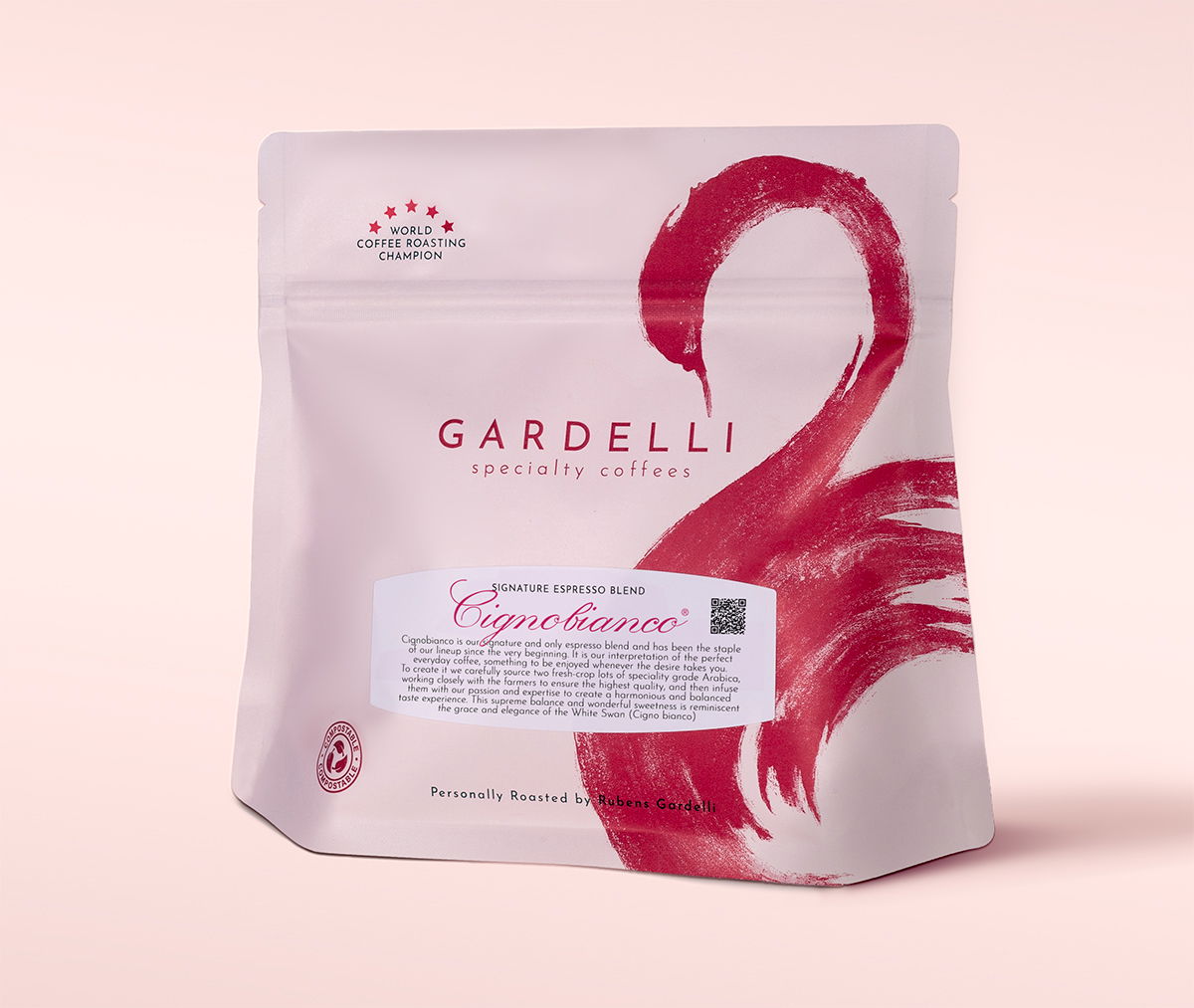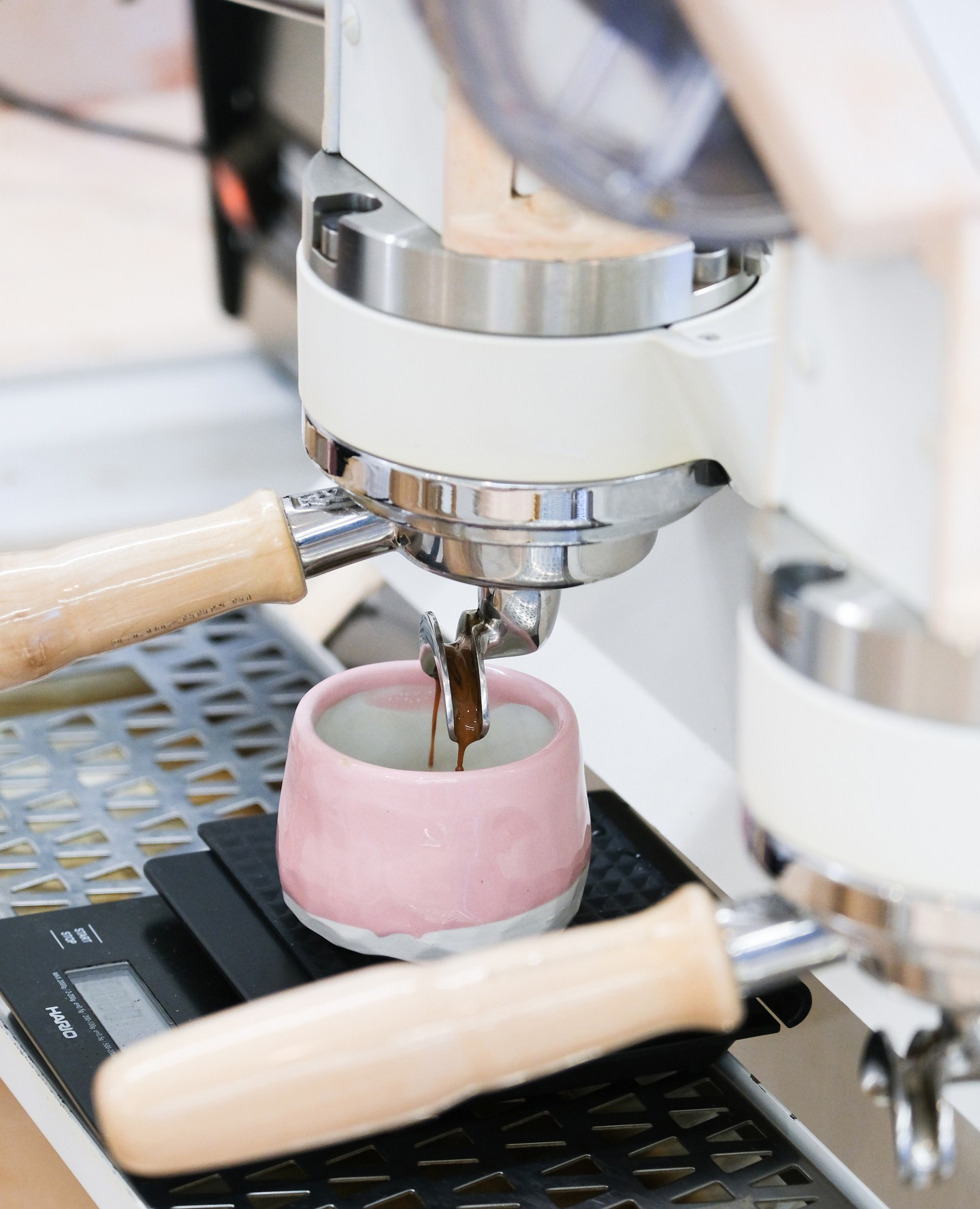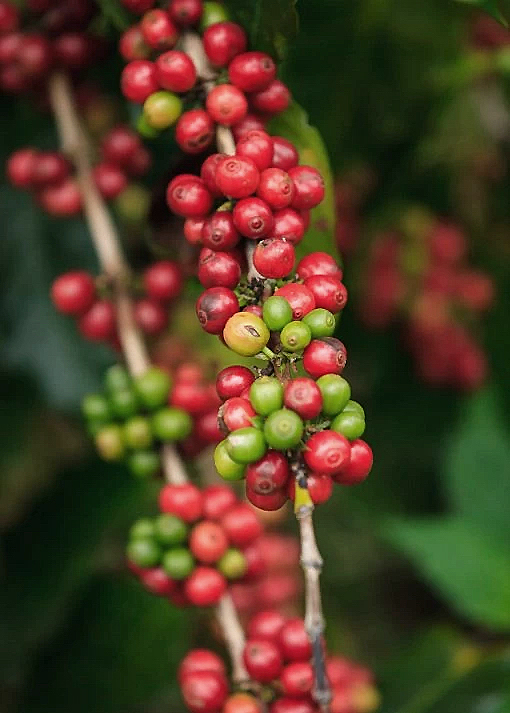






Brazil / Ethiopia
*Signature Espresso Blend*
Cup Notes: Milk Chocolate, Almond, Plum, Caramel
Suggested for espresso
Traditional Italian Recipe
For 2 servings (2-spouts portafilter)
Dose: 16/17 g
Brew Time: 25/30 sec.
Brew Wight: 17 g (for each cup)
Water Temperature: 94/95°
when we roast
We freshly roast to order all coffees on Monday, Wednesday and Friday (excluding national holidays), and ship the same day! Cut-off time is 11:59pm (UTC+1) of the day before the roast day. *We only ship whole beans*
Cignobianco is our signature and only espresso blend, a cornerstone of our lineup since the very beginning. It represents our vision of the perfect everyday coffee — something to be enjoyed whenever the moment calls for it.
To create it, we carefully source two fresh-crop lots of specialty-grade Arabica, working closely with the farmers to ensure the highest quality. We then infuse them with our passion and expertise to craft a harmonious and balanced taste experience. This supreme balance and wonderful sweetness evoke the grace and elegance of the White Swan — Cigno Bianco.

CATUAI
Catuai is an Arabica variety developed in Brazil during the 1950s and 1960s through a cross between Mundo Novo and Caturra. Compact and highly adaptable, it thrives across a wide range of altitudes and climates, which has made it a popular choice throughout the Americas.
The plant’s small size allows for dense planting and easy harvesting, contributing to its high productivity compared to Bourbon. This characteristic also encouraged the rise of full-sun coffee cultivation in Central America during the 1970s and 1980s.
Catuai trees are vigorous yet low-growing, with round, compact cherries that may be red or yellow, depending on the type. While prized for its bright acidity and balanced body, the variety is susceptible to coffee leaf rust.
Cup profiles vary by origin, but Catuai generally offers a clean and versatile expression, often with fruity and floral notes and a smooth, satisfying structure.
JARC
JARC cultivars are coffee varieties developed by the Jimma Agricultural Research Centre (JARC) in Ethiopia, established in the 1960s to improve productivity and disease resistance while preserving cup quality.
Through selective breeding of local landraces, JARC released a range of cultivars — such as 74110, 74112, and 74158 — now widely grown across the country.
These varieties were primarily selected for their resilience to Coffee Berry Disease (CBD) and high yield, yet many have also shown excellent sensory potential, maintaining the distinctive floral and citrus characteristics typical of Ethiopian heirloom coffees.
Today, JARC cultivars play a vital role in ensuring the sustainability of Ethiopian coffee production, bridging the gap between traditional landraces and modern agronomy.

BRAZIL
Dry process seems simple: pick the fruit, lay it out in the sun until it turns from red to brown to nearly black, and then hull off the thick, dried outer layer in one step to reveal the green bean. It is a method suited to arid regions, where the sun and heat can dry the seed inside the intact fruit skin.
It's often referred to as "natural coffee" because of its simplicity, and because the fruit remains intact and undisturbed, a bit like drying grapes into raisins. Since it requires minimal investment, the dry process method is a default to create cheap commodity-grade coffee in areas that have the right climate capable of drying the fruit and seed.
But it’s a fail in humid or wet regions. If the drying isn't progressing fast enough, the fruit degrades, rots or molds.
Dry-processed coffees can also be wildly inconsistent. If you want a cleanly-fruited, sweet, intense cup, dry process (DP) takes more hand labor than the wet process. Even the most careful pickers will take green unripe or semi-ripe coffee off the branch as they pick red, ripe cherry. If these are not removed in the first days of drying, the green turns to brown that is hard to distinguish from the ripe fruit.
ETHIOPIA
In the washed process, the outer skin and most of the pulp (exocarp and part of the mesocarp) are mechanically removed, exposing the parchment coffee still coated in its sticky, sugar-rich mucilage.
This mucilage is then broken down and removed through fermentation in water tanks, where controlled microbial activity dissolves the remaining sugars.
Once fermentation is complete, the parchment is washed thoroughly to remove any residue and then dried, either mechanically or under the sun, until the ideal moisture level is reached.
The washed process highlights clarity and brightness in the cup, resulting in a clean, refined profile that accentuates the coffee’s natural acidity and floral or fruity notes.
